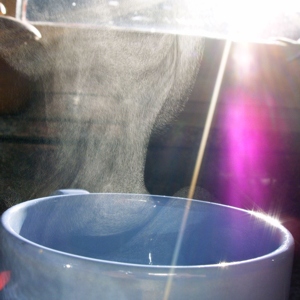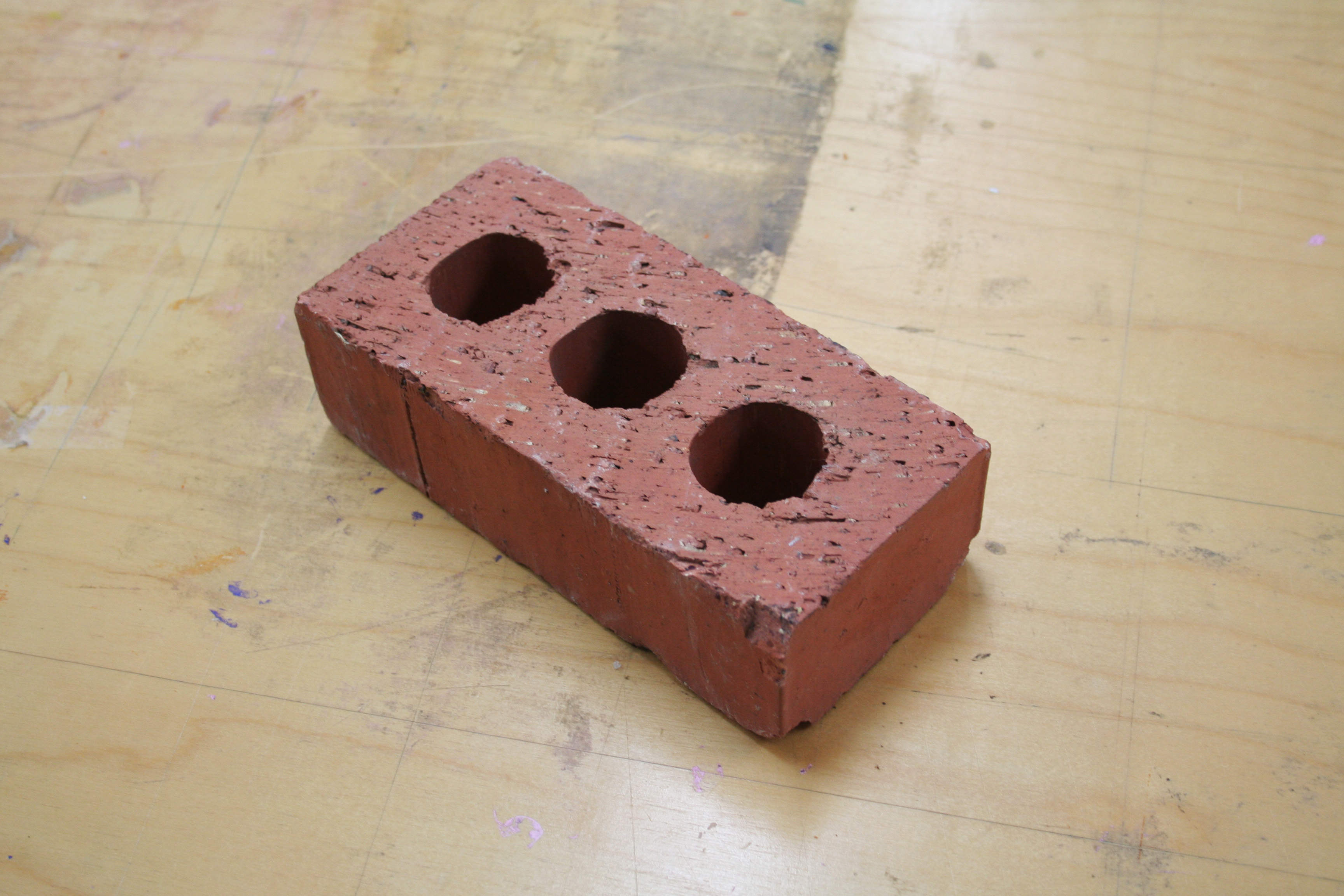|
Evaporative Cooling Chambers
Evaporative cooling chambers (ECCs), also known as "zero energy cool chambers" (ZECCs), are a type of evaporative cooler, which are simple and inexpensive ways to keep vegetables fresh without the use of electricity. Evaporation of water from a surface removes heat, creating a cooling effect, which can improve vegetable storage shelf life. ECCs are relatively large compared to the more common household clay pot cooler, and are therefore most suitable for farmers with large production quantities, farming groups, or farming cooperatives. History The brick ECC was originally developed in India by Susanta K. Roy and D.S. Khuridiya in the early 1980s to address fruit and vegetable post-harvest losses, especially in rural areas where electricity is non-existent. Roy and Khuridiya’s ECC design is composed of a double brick wall structure, supported by a base layer of brick, and covered with a straw mat. Suitability ECCs provide the most benefits when they are used in low humid ... [...More Info...] [...Related Items...] OR: [Wikipedia] [Google] [Baidu] [Amazon] |
Evaporative Cooler
An evaporative cooler (also known as evaporative air conditioner, swamp cooler, swamp box, desert cooler and wet air cooler) is a device that cools air through the evaporation of water. Evaporative cooling differs from other air conditioning systems, which use vapor-compression or absorption refrigeration cycles. Evaporative cooling exploits the fact that water will absorb a relatively large amount of heat in order to evaporate (that is, it has a large enthalpy of vaporization). The temperature of dry air can be dropped significantly through the phase transition of liquid water to water vapor (evaporation). This can cool air using much less energy than refrigeration. In extremely dry climates, evaporative cooling of air has the added benefit of conditioning the air with more moisture for the comfort of building occupants. The cooling potential for evaporative cooling is dependent on the wet-bulb depression, the difference between dry-bulb temperature and wet-bulb temperature ... [...More Info...] [...Related Items...] OR: [Wikipedia] [Google] [Baidu] [Amazon] |
Evaporation
Evaporation is a type of vaporization that occurs on the Interface (chemistry), surface of a liquid as it changes into the gas phase. A high concentration of the evaporating substance in the surrounding gas significantly slows down evaporation, such as when humidity affects rate of evaporation of water. When the molecules of the liquid collide, they transfer energy to each other based on how they collide. When a molecule near the surface absorbs enough energy to overcome the vapor pressure, it will escape and enter the surrounding air as a gas. When evaporation occurs, the energy removed from the vaporized liquid will reduce the temperature of the liquid, resulting in evaporative cooling. On average, only a fraction of the molecules in a liquid have enough heat energy to escape from the liquid. The evaporation will continue until an equilibrium is reached when the evaporation of the liquid is equal to its condensation. In an enclosed environment, a liquid will evaporate unt ... [...More Info...] [...Related Items...] OR: [Wikipedia] [Google] [Baidu] [Amazon] |
Pot-in-pot Refrigerator
A pot-in-pot refrigerator, clay pot cooler or zeer () is an evaporative cooling refrigeration device which does not use electricity. It uses a porous outer clay pot (lined with wet sand) containing an inner pot (which can be ceramic glaze, glazed to prevent penetration by the liquid) within which the food is placed. The evaporation of the outer liquid draws heat from the inner pot. The device can cool any substance, and requires only a flow of relatively dry air and a source of water. History Many clay pots from around 3000 BC were discovered in the Indus Valley civilization and are considered to have been used for cooling as well as storing water. The pots are similar to the present-day ''ghara'' and ''Matki (earthen pot), matki'' used in India and Pakistan. There is evidence that evaporative cooling may have been used in North Africa as early as the Old Kingdom of Egypt, circa 2500 BC. Frescoes show slaves fanning water jars, which would increase air flow around porous jar ... [...More Info...] [...Related Items...] OR: [Wikipedia] [Google] [Baidu] [Amazon] |
Cooperative
A cooperative (also known as co-operative, coöperative, co-op, or coop) is "an autonomy, autonomous association of persons united voluntarily to meet their common economic, social and cultural needs and aspirations through a jointly owned and democratically-controlled wikt:Enterprise, enterprise". Cooperatives are democratically controlled by their members, with each member having one vote in electing the board of directors. They differ from Collective farming, collectives in that they are generally built from the bottom-up, rather than the top-down. Cooperatives may include: * Worker cooperatives: businesses owned and managed by the people who work there * Consumer cooperatives: businesses owned and managed by the people who consume goods and/or services provided by the cooperative * Producer cooperatives: businesses where producers pool their output for their common benefit ** e.g. Agricultural cooperatives * Purchasing cooperatives where members pool their purchasing power ... [...More Info...] [...Related Items...] OR: [Wikipedia] [Google] [Baidu] [Amazon] |
Humidity
Humidity is the concentration of water vapor present in the air. Water vapor, the gaseous state of water, is generally invisible to the human eye. Humidity indicates the likelihood for precipitation (meteorology), precipitation, dew, or fog to be present. Humidity depends on the temperature and pressure of the system of interest. The same amount of water vapor results in higher relative humidity in cool air than warm air. A related parameter is the dew point. The amount of water vapor needed to achieve saturation increases as the temperature increases. As the temperature of a parcel of air decreases it will eventually reach the saturation point without adding or losing water mass. The amount of water vapor contained within a parcel of air can vary significantly. For example, a parcel of air near saturation may contain 8 g of water per cubic metre of air at , and 28 g of water per cubic metre of air at Three primary measurements of humidity are widely employed: abso ... [...More Info...] [...Related Items...] OR: [Wikipedia] [Google] [Baidu] [Amazon] |
Vegetable
Vegetables are edible parts of plants that are consumed by humans or other animals as food. This original meaning is still commonly used, and is applied to plants collectively to refer to all edible plant matter, including edible flower, flowers, fruits, edible plant stem, stems, leaf vegetable, leaves, list of root vegetables, roots, and list of edible seeds, seeds. An alternative definition is applied somewhat arbitrarily, often by culinary and cultural tradition; it may include savoury fruits such as tomatoes and courgettes, flowers such as broccoli, and seeds such as Pulse (legume), pulses, but exclude foods derived from some plants that are fruits, flowers, nut (fruit), nuts, and cereal grains. Originally, vegetables were collected from the wild by hunter-gatherers and entered cultivation in several parts of the world, probably during the period 10,000 BC to 7,000 BC, when a new History of agriculture, agricultural way of life developed. At first, plants that g ... [...More Info...] [...Related Items...] OR: [Wikipedia] [Google] [Baidu] [Amazon] |
Brick
A brick is a type of construction material used to build walls, pavements and other elements in masonry construction. Properly, the term ''brick'' denotes a unit primarily composed of clay. But is now also used informally to denote building units made of other materials or other chemically cured construction blocks. Bricks can be joined using Mortar (masonry), mortar, adhesives or by interlocking. Bricks are usually produced at brickworks in numerous classes, types, materials, and sizes which vary with region, and are produced in bulk quantities. Concrete masonry unit, ''Block'' is a similar term referring to a rectangular building unit composed of clay or concrete, but is usually larger than a brick. Lightweight bricks (also called lightweight blocks) are made from expanded clay aggregate. Fired bricks are one of the longest-lasting and strongest building materials, sometimes referred to as artificial stone, and have been used since . Air-dried bricks, also known as mudbricks ... [...More Info...] [...Related Items...] OR: [Wikipedia] [Google] [Baidu] [Amazon] |
Burlap
Hessian (, ), burlap in North America, or crocus in Jamaica and the wider Caribbean, is a woven fabric made of vegetable fibres, usually the skin of the jute plant or sisal leaves. It is generally used (in the crude tow form known as gunny) for duties of rough handling, such as making sacks employed to ship farm products and to act as covers for sandbags (although woven plastics now often serve these purposes), and for wrapping tree- root balls. However, this dense woven fabric, historically coarse, more recently is being produced in a refined state, known simply as ''jute'', as an eco-friendly material for bags, rugs, and other products. The name "hessian" is attributed to the historic use of the fabric as part of the uniform of soldiers from the former Landgraviate of Hesse (1264–1567) and its successors, who were called '' Hessians''. Hessian cloth comes in different types of construction, form, size and color. The origin of the word ''burlap'' is uncertain, though i ... [...More Info...] [...Related Items...] OR: [Wikipedia] [Google] [Baidu] [Amazon] |
Plastic Container
Plastic containers are containers made exclusively or partially of plastic. Plastic containers are ubiquitous either as single-use or reuseable/durable plastic cups, plastic bottles, plastic bags, foam food containers, Tupperware, plastic tubes, clamshells, cosmetic containers, up to intermediate bulk containers and various types of containers made of corrugated plastic. The entire packaging industry heavily depends on plastic containers or containers with some plastic content (e.g. plastic coating or when made of composite material), besides paperboard and other materials. Food storage nowadays relies mainly on plastic food storage containers. A basic but important distinction is between single-use / disposable and multi-use / durable containers. The former makes up a notable portion of the global plastic waste (e.g. toothpaste tubs, food delivery foam containers, most plastic bottles, etc.). Because of the multitude of container applications, the types of plastic ... [...More Info...] [...Related Items...] OR: [Wikipedia] [Google] [Baidu] [Amazon] |
Ethylene
Ethylene (IUPAC name: ethene) is a hydrocarbon which has the formula or . It is a colourless, flammable gas with a faint "sweet and musky" odour when pure. It is the simplest alkene (a hydrocarbon with carbon–carbon bond, carbon–carbon double bonds). Ethylene is widely used in the chemical industry, and its worldwide production (over 150 million tonnes in 2016) exceeds that of any other organic compound. Much of this production goes toward creating polyethylene, which is a widely used plastic containing polymer chains of ethylene units in various chain lengths. Production greenhouse gas emissions, emits greenhouse gases, including methane from feedstock production and carbon dioxide from any non-sustainable energy used. Ethylene is also an important natural plant hormone and is used in agriculture to induce ripening of fruits. The hydrate of ethylene is ethanol. Structure and properties This hydrocarbon has four hydrogen atoms bound to a pair of carbon atoms that are con ... [...More Info...] [...Related Items...] OR: [Wikipedia] [Google] [Baidu] [Amazon] |
Irrigation
Irrigation (also referred to as watering of plants) is the practice of applying controlled amounts of water to land to help grow crops, landscape plants, and lawns. Irrigation has been a key aspect of agriculture for over 5,000 years and has been developed by many cultures around the world. Irrigation helps to grow crops, maintain landscapes, and revegetation, revegetate disturbed soils in dry areas and during times of below-average rainfall. In addition to these uses, irrigation is also employed to protect crops from frost, suppress weed growth in grain fields, and prevent soil consolidation. It is also used to cool livestock, reduce dust, dispose of sewage, and support mining operations. Drainage, which involves the removal of surface and sub-surface water from a given location, is often studied in conjunction with irrigation. There are several methods of irrigation that differ in how water is supplied to plants. Surface irrigation, also known as gravity irrigation, is the olde ... [...More Info...] [...Related Items...] OR: [Wikipedia] [Google] [Baidu] [Amazon] |






